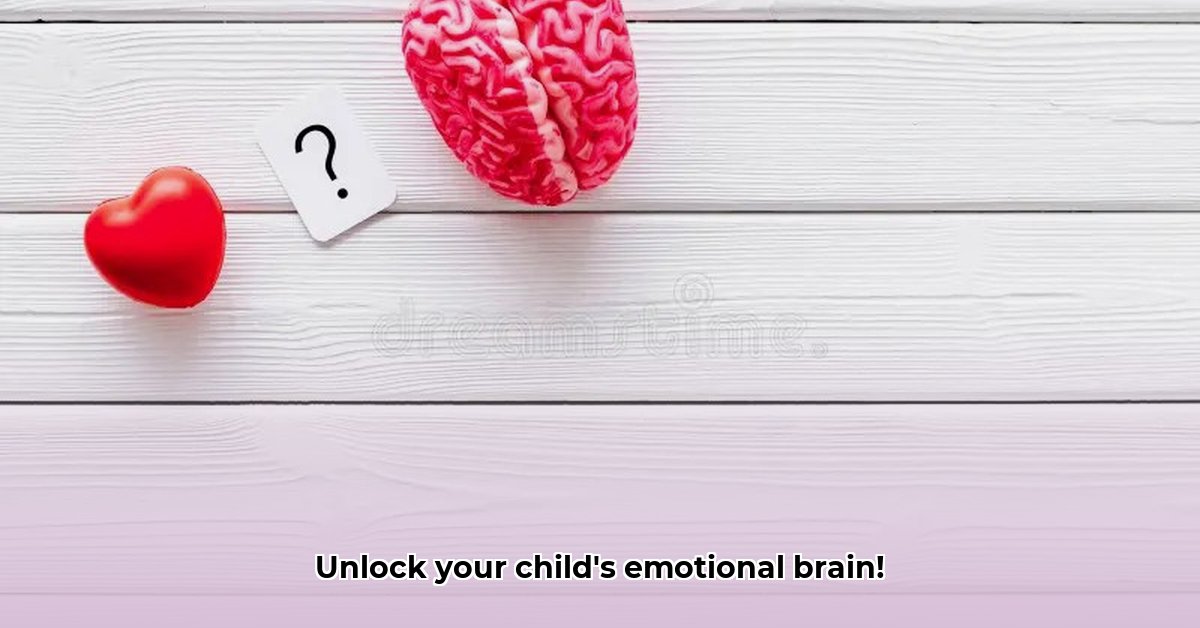
Want to give your kids the tools to understand their feelings? This guide uses the fantastic children's book, "Hersenen En Emoties In Beeld," to show you how. We'll explore why understanding the brain-emotion connection is so crucial, and offer practical tips for parents and teachers. We'll even tackle how to access resources if you're facing online challenges.
Understanding the Brain-Emotion Connection: Why it Matters
Helping children understand their emotions is vital for their wellbeing. It's like giving them a map to navigate life's ups and downs. "Hersenen En Emoties In Beeld" ("Brains and Emotions in Pictures") is a brilliant resource that does just that, using visuals to make complex ideas accessible. Isn't it true that emotional literacy is essential for a child's healthy development?
The Brain as a Busy Playground
Think of the brain as a bustling playground. Different parts work together in amazing ways. Emotions are like the sounds – happy shouts, quiet whispers, or angry screams. Understanding this helps us understand what our children are going through. Connecting thoughts, feelings, and physical sensations builds self-awareness and coping skills. This is essential for emotional growth and resilience. Early research suggests this improves emotional intelligence, creating a foundation for future well-being. However, the field is constantly evolving, and more robust research is underway.
"Hersenen En Emoties In Beeld": A Closer Look
This children's book cleverly uses pictures and simple language to explain how our brains process emotions. It's not just about labelling feelings; it's about understanding why we feel them. It gently explains the brain's role, making it fun and engaging for young readers. The visuals are captivating, and experts believe this approach is particularly helpful for children who struggle with verbal expression. The goal is to give young children a simplified understanding of complex neurological processes – a valuable objective, according to many child development specialists.
Using "Hersenen En Emoties In Beeld" Effectively: Step-by-Step Guide
Let's explore how you can best use this resource:
Shared Reading Time: Make reading "Hersenen En Emoties In Beeld" together a special time. Ask questions about the pictures – what do they see? What's happening? This encourages interaction and understanding.
Feeling Conversations: After reading, discuss the characters' emotions. How are they feeling? Why? What could they do differently? This prompts emotional reflection and problem-solving.
Real-Life Connections: Relate the book's ideas to your child's experiences. When have they felt happy, sad, angry, or scared? This shows emotions are a normal part of life, fostering acceptance.
Creative Expression: Encourage drawing, painting, play-acting, or other creative outlets to express feelings. Creative expression can be a powerful emotional release and self-discovery tool for children.
Role-Playing Fun: Use the book to inspire role-playing. Create scenarios based on the characters and their situations. This provides a safe space for exploring difficult emotions through play.
Overcoming Access Barriers: Finding Alternative Resources
If you can't access the book online, don't worry! Your local library likely carries similar books. Many free online resources and educational websites are dedicated to child development—a quick search could unearth a treasure trove of information. Remember, the goal is to foster emotional understanding, and there are multiple pathways to achieve that.
Benefits of Emotional Literacy: Building a Strong Foundation
Using "Hersenen En Emoties In Beeld" offers numerous benefits:
- Improved emotional literacy: Children learn to identify, understand and express feelings more easily.
- Enhanced self-awareness: Kids develop better understanding of themselves, their reactions, and triggers.
- Increased empathy: They learn to recognise and understand others' feelings, strengthening relationships.
- Better coping mechanisms: They develop healthier ways to manage difficult feelings and situations.
- Stronger parent-child bond: Sharing the book and discussing emotions creates a closer connection.
- Fosters open communication: It encourages open conversations about feelings, creating a safe space.
Remember, every child is unique. The key is finding what works best for your child, making learning about emotions a fun experience. "Hersenen En Emoties In Beeld" is a great start to this journey – building a strong foundation of emotional understanding for a lifetime. While long-term research is still underway, early findings are promising.
Improving Website Accessibility for Child Psychology Resources
Accessibility is key to ensuring all parents and educators have access to vital resources. Simple design choices can make a huge difference for children and those with disabilities. Let's look at steps to improve website accessibility.
Ensuring Inclusive Access
Imagine a parent struggling to help their child with emotional challenges. A difficult-to-navigate website, even one containing valuable information, becomes useless to them. Creating accessible websites isn't just about compliance; it's about inclusion.
Creating User-Friendly Websites
Here's how to build an accessible website:
- Clear, Simple Language: Use short sentences and everyday words – avoid complex jargon.
- Visual Clarity: Use high contrast between text and background. Ensure sufficient font sizes. Provide alt text for images.
- Multimedia Accessibility: Include captions for videos and transcripts for audio.
- Responsive Design: Ensure the website works on all devices.
- Keyboard Navigation: The site should be fully navigable by keyboard.
- Regular Testing: Test frequently using assistive technologies.
Following these steps, and adhering to WCAG (Web Content Accessibility Guidelines) 2.1 Level AA, ensures a user-friendly experience for everyone.
Content Accessibility: Beyond the Technical
Technical details are only part of it. Content must also be accessible:
- Use clear visual aids like diagrams and charts.
- Include diverse examples and stories.
- Use headings, subheadings, and bullet points to structure content.
Accessibility benefits everyone:
- Wider Reach: More parents and educators can access vital resources.
- Enhanced User Experience: Everyone enjoys a smoother, more positive experience.
- Legal Compliance: Avoids potential legal issues related to accessibility regulations.
- Improved Reputation: Shows a commitment to inclusivity and digital equity.
By prioritizing website accessibility, we empower parents and educators to better support children's emotional and cognitive development. Let's make sure that everyone can access information they need.